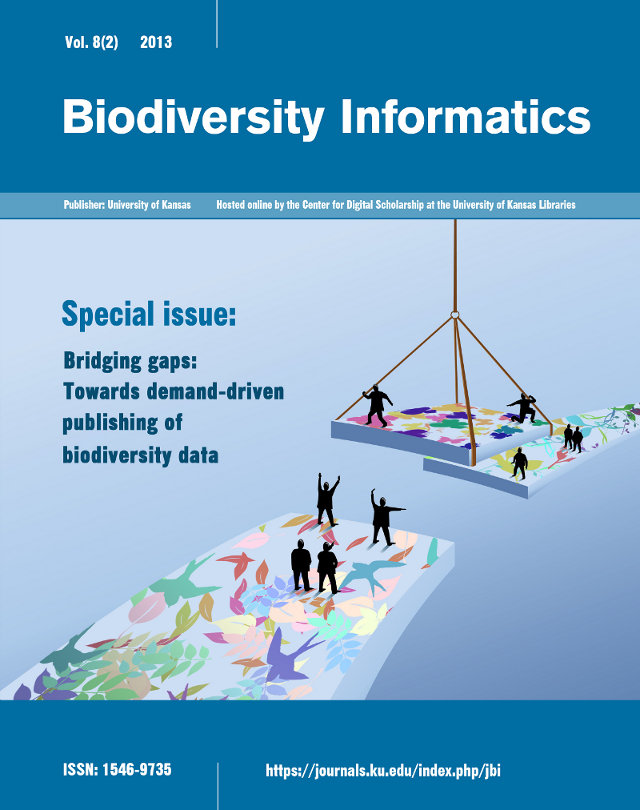Discovery and publishing of primary biodiversity data associated with multimedia resources: The Audubon Core strategies and approaches
DOI:
https://doi.org/10.17161/bi.v8i2.4117Keywords:
multimedia, metadata, standards,Abstract
The Audubon Core Multimedia Resource Metadata Schema is a representation-free vocabulary for the description of biodiversity multimedia resources and collections, now in the final stages as a proposed Biodiversity Informatics Standards (TDWG) standard. By defining only six terms as mandatory, it seeks to lighten the burden for providing or using multimedia useful for biodiversity science. At the same time it offers rich optional metadata terms that can help curators of multimedia collections provide authoritative media that document species occurrence, ecosystems, identification tools, ontologies, and many other kinds of biodiversity documents or data. About half of the vocabulary is re-used from other relevant controlled vocabularies that are often already in use for multimedia metadata, thereby reducing the mapping burden on existing repositories. A central design goal is to allow consuming applications to have a high likelihood of discovering suitable resources, reducing the human examination effort that might be required to decide if the resource is fit for the purpose of the application.Downloads
Download data is not yet available.
Downloads
Published
2013-07-09
Issue
Section
Articles (peer-reviewed)
License
Copyright for articles published in this journal is retained by the authors, with first publication rights granted to the journal. All articles are licensed under a Creative Commons Attribution Non-Commercial license.
Competing Interests: The authors have declared that no competing interests exist.
How to Cite
Morris, Robert A, Vijay Barve, Mihail Carausu, Vishwas Chavan, José Cuadra, Chris Freeland, Gregor Hagedorn, et al. 2013. “Discovery and Publishing of Primary Biodiversity Data Associated With Multimedia Resources: The Audubon Core Strategies and Approaches”. Biodiversity Informatics 8 (2). https://doi.org/10.17161/bi.v8i2.4117.

